The Full Guide to Tracking Your Procurement Savings


Procurement is well-known for its role in helping companies save money on goods and services they purchase. Some would even argue that is its only role.
But did you know that tracking those savings can unlock benefits beyond just an immediate boost to the cash flow?
If this is news to you, you’re in for a treat.
In this article, we dive into the nitty-gritty of procurement savings tracking.
We’ll explain some of the key concepts related to the process, highlight its numerous benefits, and show you which tools to use to master it quickly and easily.
By the end, you’ll not only understand savings tracking inside and out but also gain actionable insights to take your procurement strategy to the next level.
Let’s get started.
Just like revenue generated by a company can be tracked, you can also identify, record, analyze, measure, and report the savings realized through strategic sourcing and other cost-saving initiatives implemented by the procurement team.
This process is called procurement savings tracking.
The goal?
To accurately measure the effectiveness of procurement strategies, implement tight cost control, mitigate risks such as budget overruns, and, of course, ensure that all of that is captured and clearly communicated to all stakeholders.
Put simply, the process of savings tracking is all about making the most out of your procurement function.
Todd Heimes, Vice President and General Manager at Amazon Business Worldwide, stresses how vital savings are, especially for smaller businesses.
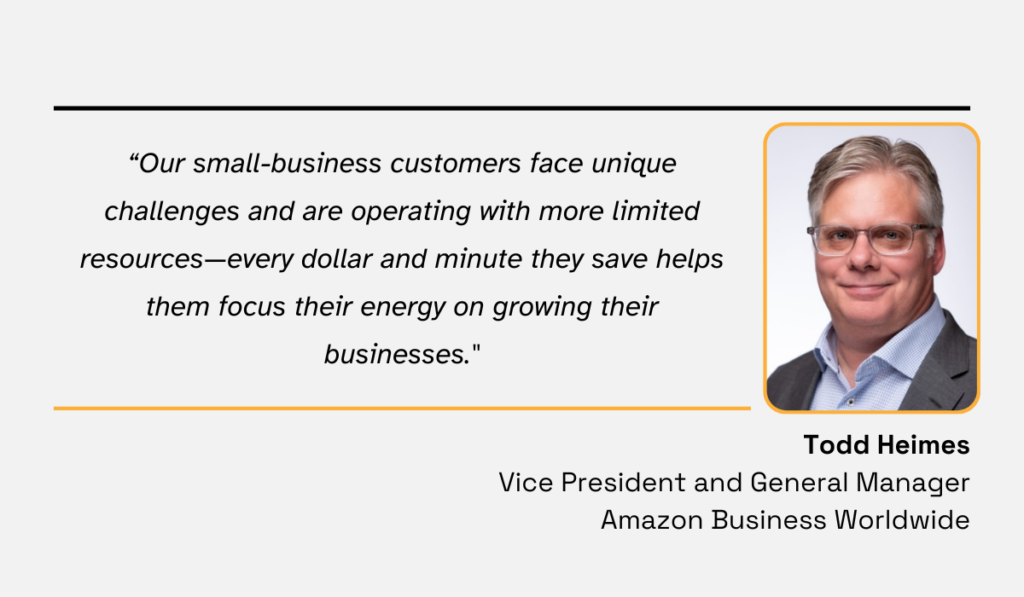
Illustration: Veridion / Quote: Amazon
After all, when resources are limited, every saved penny counts double.
But how can you expect to save money if you don’t pay attention to the procurement processes, supplier performance, spending, and cost-reduction initiatives?
This is precisely what savings tracking focuses on.
But, to nail this process, no matter the size of your business, you must understand how procurement cost savings work in the first place.
For starters, keep in mind that there are different types of savings procurement helps achieve.
Each of them is outlined in the image below.
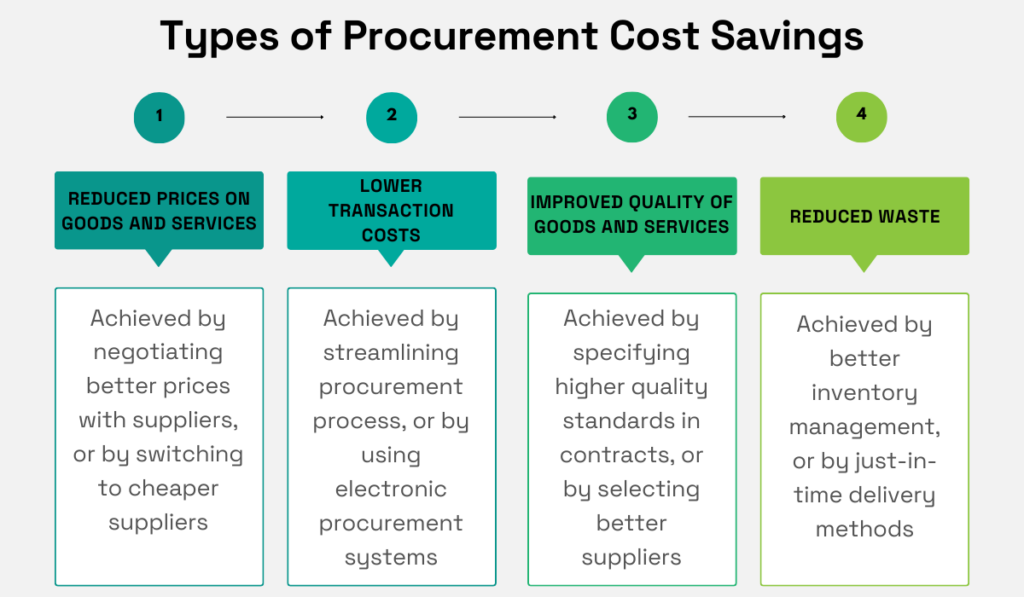
Source: Veridion
As you can see, there’s more to slashing procurement expenses than first meets the eye.
It’s not just about negotiating better prices but also improving various processes, quality measures, and overall efficiency within the procurement function.
In a similar vein, you may have also noticed that the terms “cost savings” and “cost avoidance” are often used interchangeably.
Still, these terms refer to completely different approaches to saving money.
Cost savings looks for ways to reduce the cost of goods or services that you procure, while cost avoidance is a forward-thinking strategy aimed at avoiding certain expenses down the road.
Efficient savings tracking diligently monitors both of these categories and all the types of cost savings within them to deliver a full picture of the procurement’s impact on the company’s financial health and bottom line.
Now that we’ve explained what procurement savings tracking is and outlined some key concepts associated with it, let’s dive a bit deeper.
Why this process is so important? Why should you invest your valuable time in it?
Let’s explore some of the benefits that make procurement savings tracking a game-changer.
By tracking savings, you gain valuable insights into actual cost reductions, (in)efficiencies within the procurement process, and the broader spending patterns of the company, all of which contribute to better financial visibility.
And as Aster Angagaw, VP and Head of Strategic and Public Sectors for Amazon Business, says, visibility is the key when it comes to improving businesses.
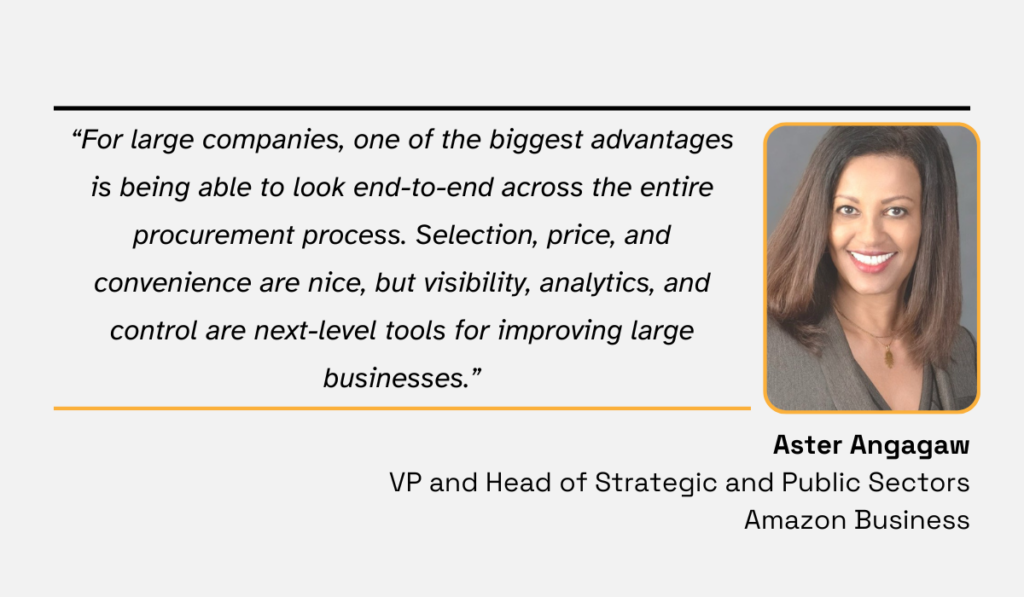
Illustration: Veridion / Quote: Fast Company
To elaborate, this financial transparency enables a deeper understanding of procurement actions and decisions, illuminating their impact on each dollar spent or saved, and, ultimately, paving the way for greater business success.
But to fully make sense of the correlation between savings monitoring, financial visibility, and financial success, let’s flip the coin for a moment.
What happens without a clear picture of procurement spending and savings?
The answer to this question comes from a 2023 Forbes article about the problem US hospitals and health systems have with overspending on services procurement.
As it turns out, between the years 2019 and 2022, their overall costs skyrocketed by nearly 18%, mostly due to a staggering 258% surge in labor procurement expenses.
The primary culprit?
Lack of financial visibility, explains Lindsay Maxwell, SVP of Client Services at RightSourcing, Inc.
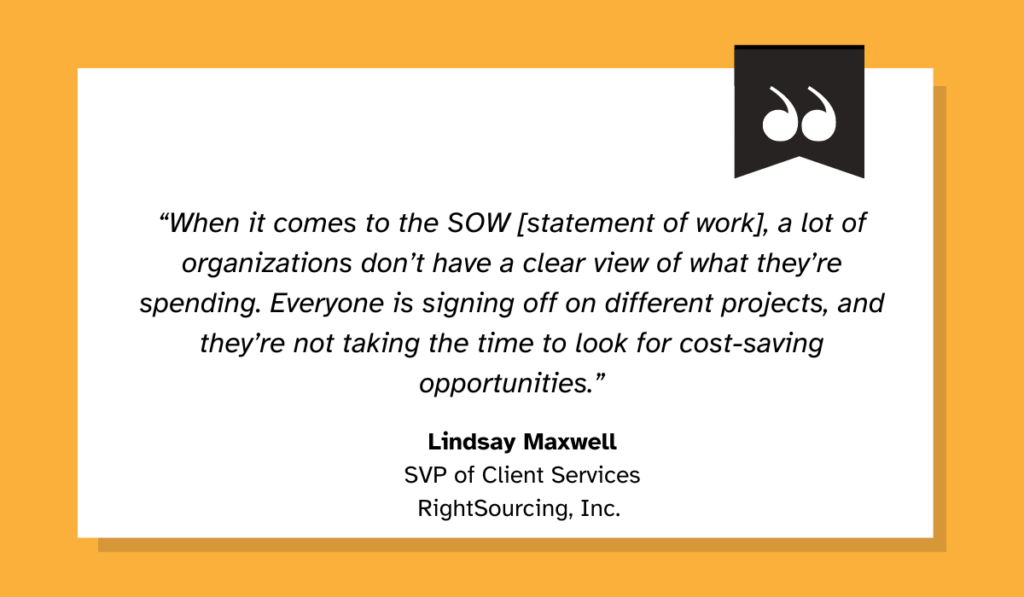
Illustration: Veridion / Quote: Forbes
It makes sense, really.
Controlling spend or reducing costs is impossible without knowing where the money goes or how it can be saved.
That’s why financial transparency is such a vital piece of the financial performance puzzle.
It helps you identify successful cost-saving strategies, improve or eliminate ineffective ones, and thus set realistic targets for the future.
Ultimately, you can think of it like this: financial visibility is the door to better decision-making and financial planning, with savings tracking being the key that unlocks that very same door.
What all of that informed decision-making and financial planning ultimately translate to is a considerable boost in profitability.
Just think about it: procurement constitutes a substantial portion of the total company spending, so it’s only natural that the ability to fully understand and mitigate these expenses will directly impact the bottom line.
Richard McIntosh, Partner & Procurement Lead H&Z UK, elaborates:
“On profitability, any organisation’s external spend on goods and services makes up a significant proportion of its costs. In a retailer that can be as much as 80 percent, in manufacturing as high as 70 percent, and even in services firms like banks or insurance companies it can be up to 40 percent of costs. If you reduce that cost, every pound, dollar or euro that you save directly increases EBITDA.”
He adds that focusing only on revenue generation simply isn’t enough if your goal is to increase profitability.
Instead, you need to be on the constant lookout for the cost-saving opportunities.
This is where cost savings tracking comes in.
According to the numbers from Consultancy.uk, procurement cost-cutting efforts, including savings monitoring, can yield bottom-line savings ranging from 5 to 10%.
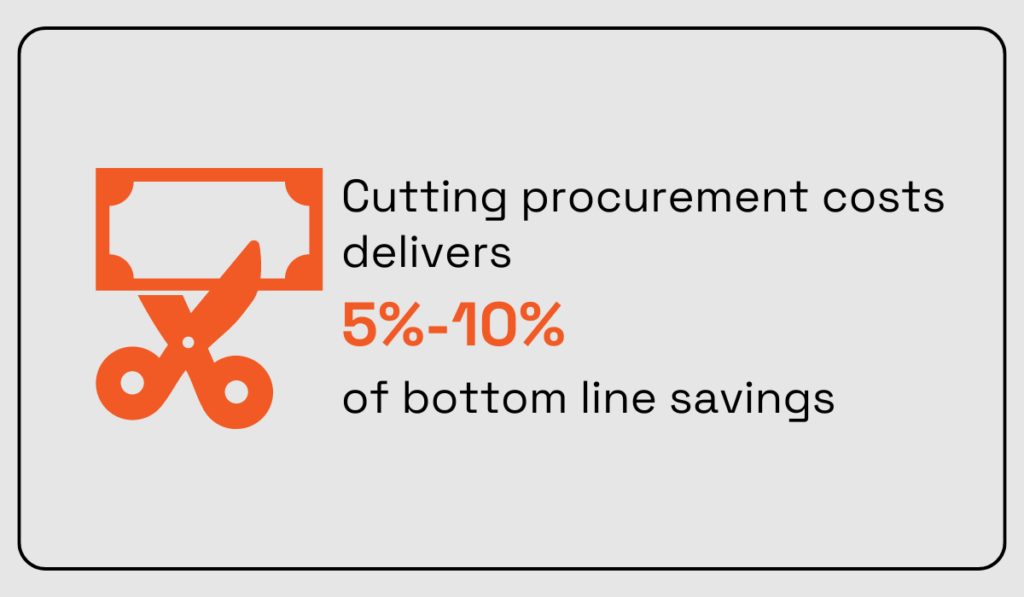
Illustration: Veridion / Data: Consultancy.uk
But the real beauty of these savings lies in their potential.
They’re not meant to idle in a bank account, but rather to be reinvested in other business areas.
Think funding growth initiatives or returning them to shareholders, thereby even further strengthening the overall profitability and ensuring success.
That’s right, the savings tracking process goes beyond the obvious when it comes to generating value for the company.
It doesn’t just help keep procurement costs under control but also creates opportunities to improve other aspects of the business.
For instance, some companies may opt to allocate these savings toward sustainability initiatives.
A survey by EY has demonstrated that 25% of businesses have already increased their revenue that way, with an additional 63% expecting to achieve the same within the next one to three years.
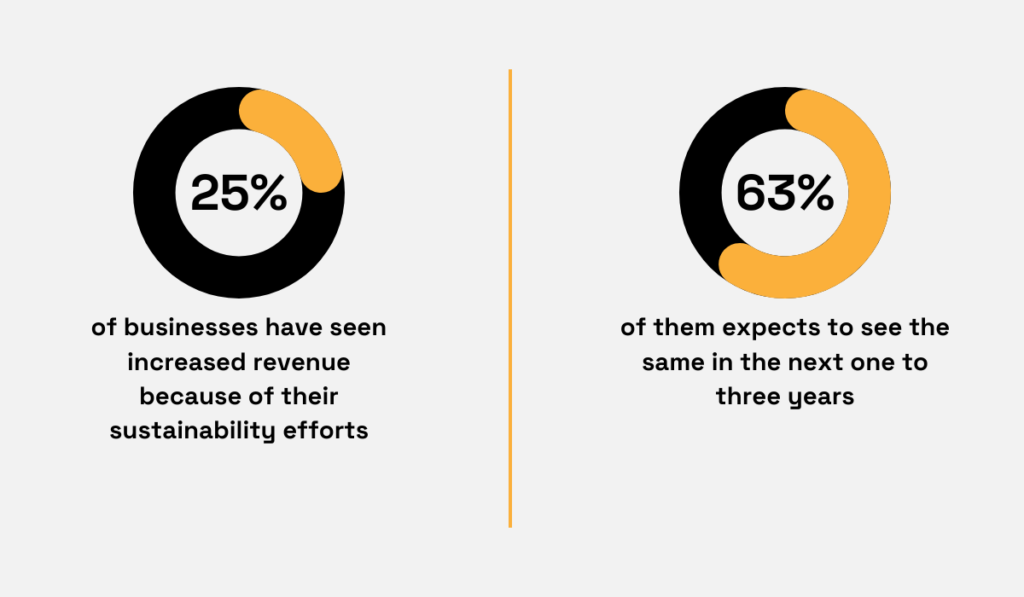
Illustration: Veridion / Data: EY
Of course, this money can be invested in anything the company deems necessary, but the main point is this: effective savings tracking is a great way to secure that extra cash to propel companies forward.
So, essentially, the role of procurement savings tracking in boosting profitability is twofold.
It’s not just about cutting the costs of procured products or services but about supporting strategic growth in all areas of the business.
Regularly analyzing cost savings data will eventually begin to reveal certain patterns and trends, shedding light on what works within the procurement function and what doesn’t.
This will tell you which practices, processes, or strategies to keep, and which might need some improvement in the future.
This will, in turn, help you build the foundation for always-resilient and always-efficient operations.
Tamra Pawlovski, Senior Director and Global Head of Leveraged Procurement and Corporate Real Estate at Corteva Agriscience, explains why this is so important.
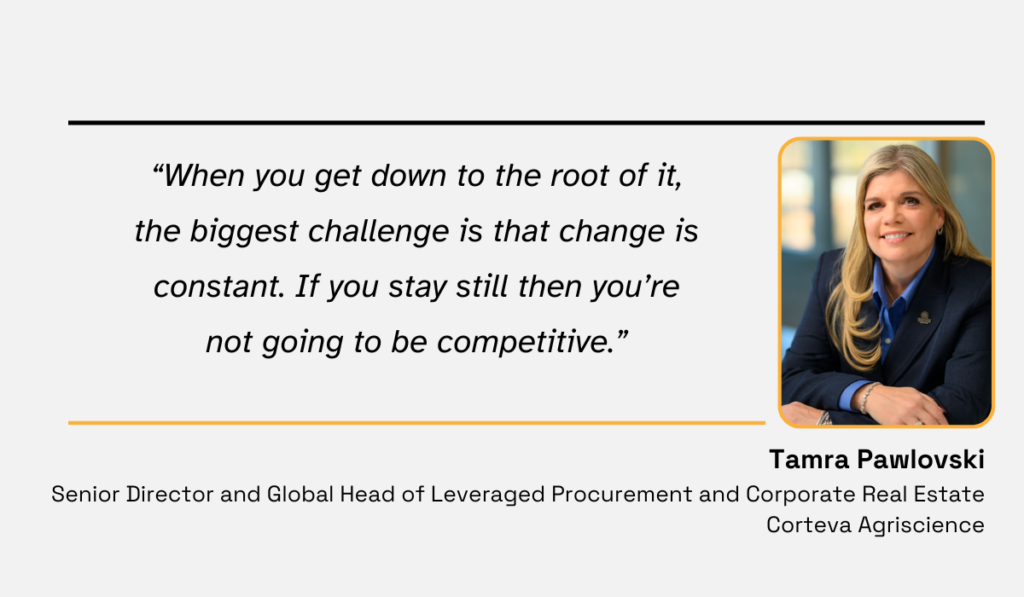
Illustration: Veridion / Quote: CPOstrategy
She knows that today, businesses simply can’t move forward if their teams, procurement included, aren’t on a constant lookout for ways to improve.
Okay, but how exactly does savings tracking support improvements in procurement? How would that work in practice?
Say, for example, you want to implement a supplier sourcing tool like Veridion to expedite your sourcing process and find more reliable suppliers.

Source: Veridion
A cost-saving analysis would focus on the financial and operational advantages of this technology and use the insights it gathers to improve other areas of procurement.
It would monitor the savings you generate from sourcing more cost-effective products, the time saved through automation, and other perks such as reduced supplier risk and enhanced ESG compliance.
Then, it would quantify these benefits and compare them against the initial investment.
If the solution proves efficient and effective in reducing costs and waste, you’d look into further digitization of other procurement areas.
At the end of the day, this is how improvements happen: you trial a tool, strategy, or process, and if it works, you apply it elsewhere.
If not, you improve or eliminate it.
Savings tracking, in this context, acts as a powerful tool for evaluating the effectiveness of those innovations or practices and ensuring you’re always moving in the right direction—toward progress and growth.
When you track your savings, you gain more transparency in the procurement process as a whole.
This allows you to see if the team is successfully meeting its targets and adhering to established procedural guidelines.
It’s like having a window into your operations, showing you whether your employees are negotiating effectively with suppliers, identifying cost-saving opportunities, and making purchases that align with the company’s budget, policies, and strategic goals.
The result?
You get to increase employee accountability and ensure procurement performance stays up to par.
The benefits?
Too many to count.
Think:
That’s right—all of these perks and more can be unlocked with diligent savings tracking.
This process assesses the effectiveness of procurement practices, monitors whether relevant policies are being followed, ensures the expected savings are being realized, and identifies areas where compliance may be lacking.
It’s a surefire way to ensure everybody’s doing what they’re supposed to, in a way they’re supposed to.
When it comes to tools for tracking savings, you, essentially, have two main options: the manual approach or automated digital solutions.
Manual tools like spreadsheets, as the name suggests, involve manual input and analysis of procurement data.
Their biggest benefit is their ease of use and relatively low cost.
Plus, spreadsheets are something everyone is already familiar with, at least to some degree, so there’s little to no training involved.
However, at Quandary Consulting Group, they caution against this approach, not only because it can be quite time-consuming but also because it’s highly prone to human error.
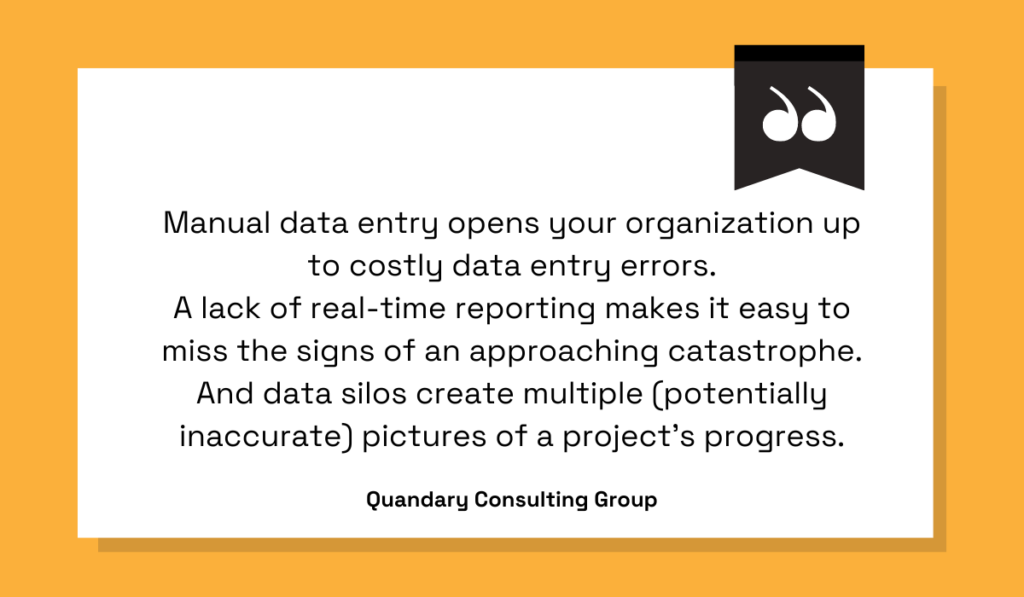
Illustration: Veridion / Quote: Procurement Magazine
This can ultimately cause more harm than good, costing you both your valuable time and hard-earned money.
Your other option is to go digital, using solutions like e-procurement software to automatically gather and analyze your cost savings data.
These digital tools come with a variety of features specifically developed to provide the most accurate, precise, and up-to-date insights.
No errors, no missing data, no cumbersome processes.
It’s perhaps unsurprising, then, that, according to Hackett Group’s survey, 65% of CPOs now use digital solutions for project pipeline and savings tracking, with an additional 20% piloting this technology.
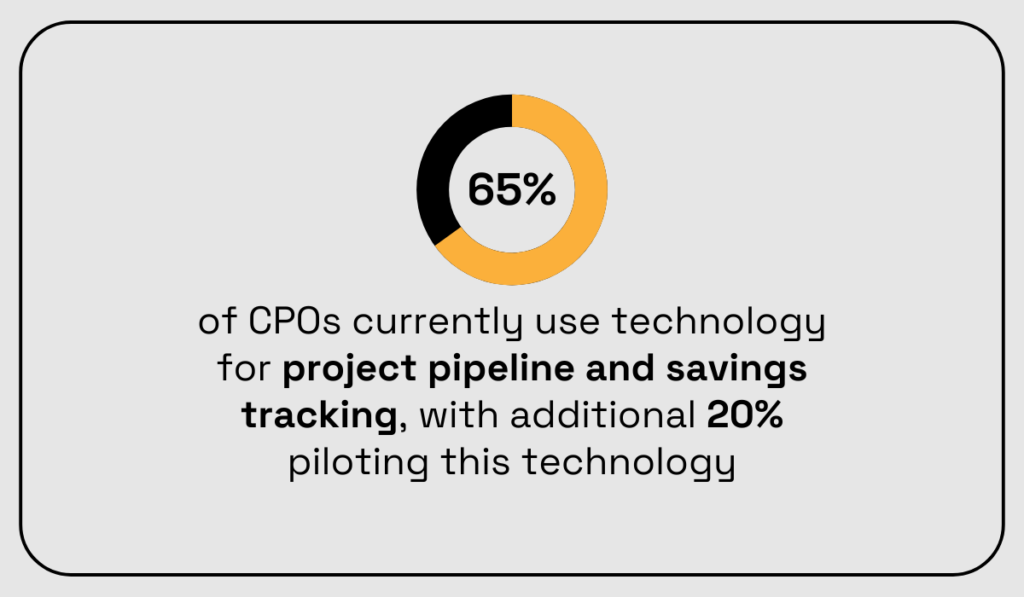
Illustration: Veridion / Data: The Hackett Group
Suppose you want to switch to one of these solutions, too.
How would you choose the right one? What features do you look for?
Here are some factors to consider:
| Data capture and integration | Your tool should have the ability to gather data from various sources such as invoices, contracts, and purchase orders |
| Reporting and analytics | Your tool should generate custom reports and make data easier to visualize |
| Collaboration | Your tool should enable various stakeholders to access data |
| Scalability | Your tool should be able to grow with your business |
| Ease of use | Your tool should be easy to install, implement, learn, and use |
Ultimately, no matter the type of tool you decide to go for, be sure to prioritize ease of use and robust data analysis capabilities.
After all, your savings tracking system needs to make things easier and more efficient, not slow you down. That would defeat the whole purpose.
So, choose wisely, and you’ll unlock so many useful insights into your operations, taking your procurement performance to a whole new level.
Who would’ve guessed that this often neglected process could be such a game-changer, not just for procurement teams but for entire companies?
Forget the common procurement stereotype: it isn’t all just about saving money.
It’s also about improving vital processes, making data-driven decisions, ensuring compliance, and ultimately, boosting profitability through the roof.
The best part?
You can unlock these perks for yourself.
All you’re going to need is the right savings tracking tool, accurate and up-to-date procurement data, as well as a bit of patience.
So, be sure to start vigilantly tracking those procurement savings today.
Record them, document them, analyze them, and make the most out of them because, within them, there’s the blueprint for unparalleled procurement results and long-term business success.